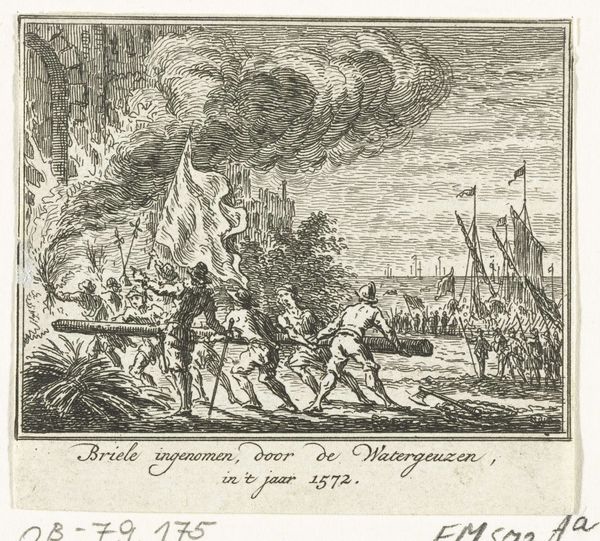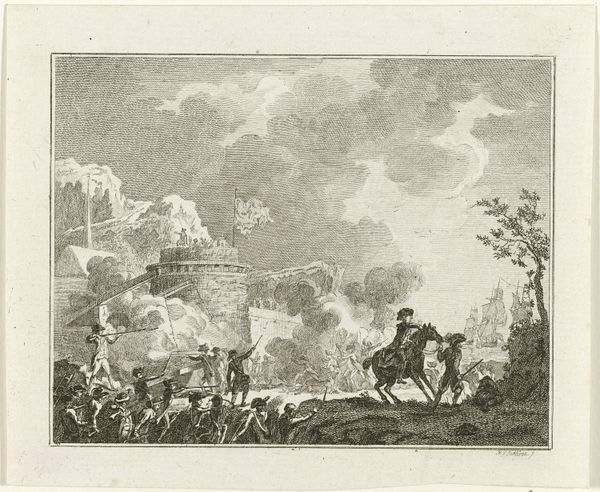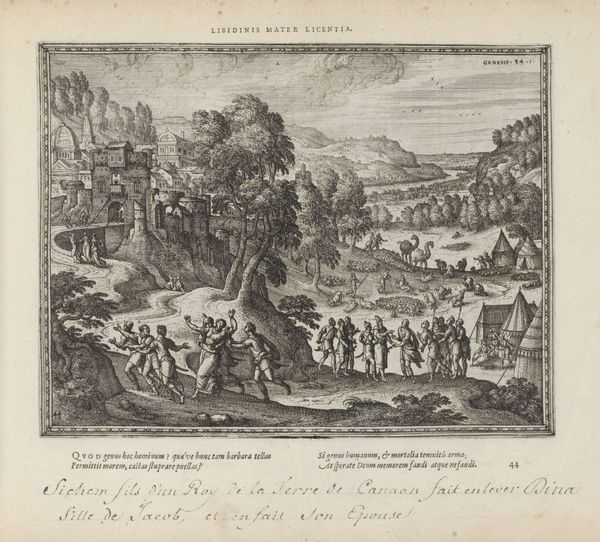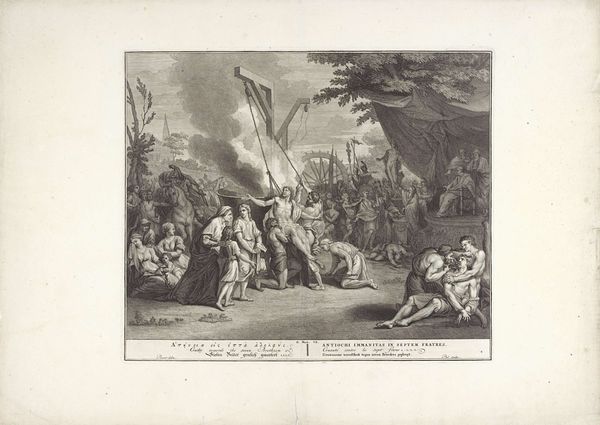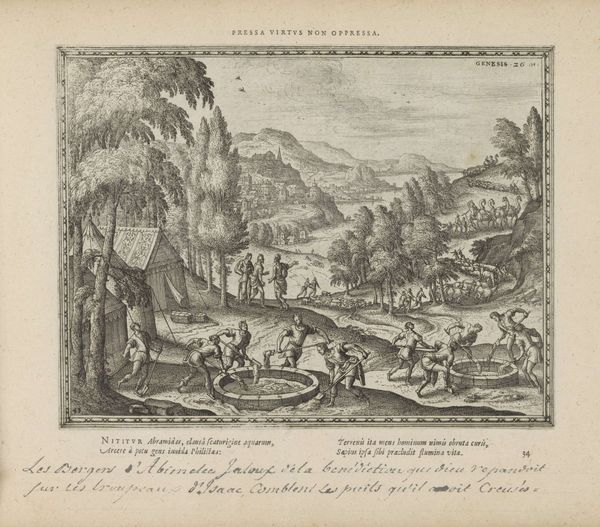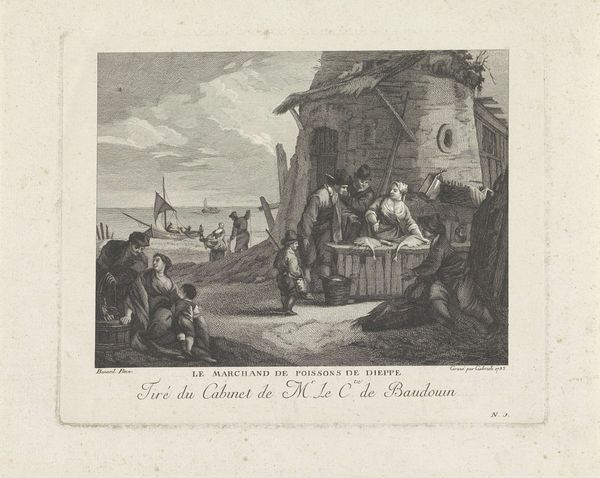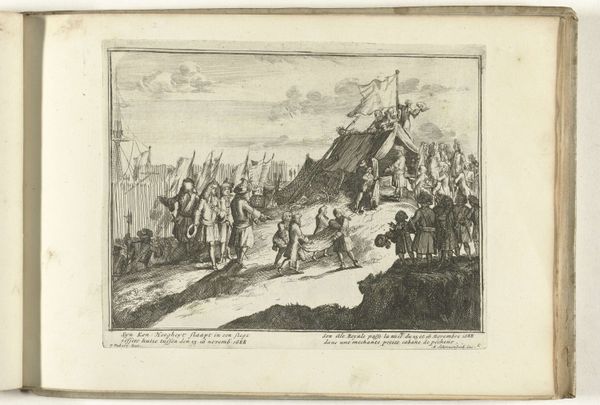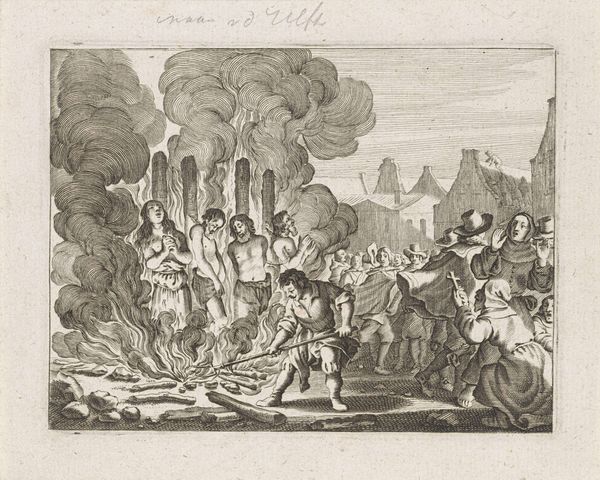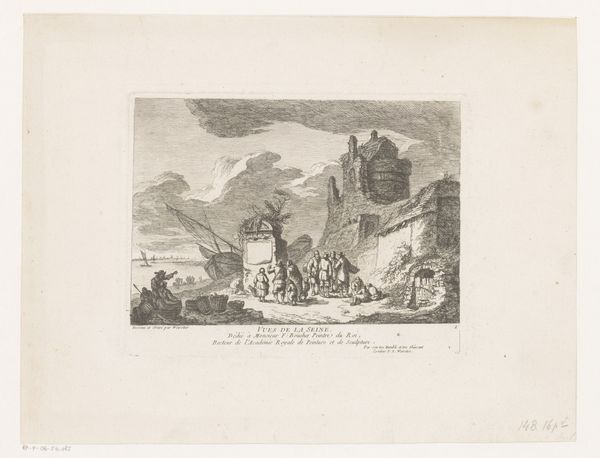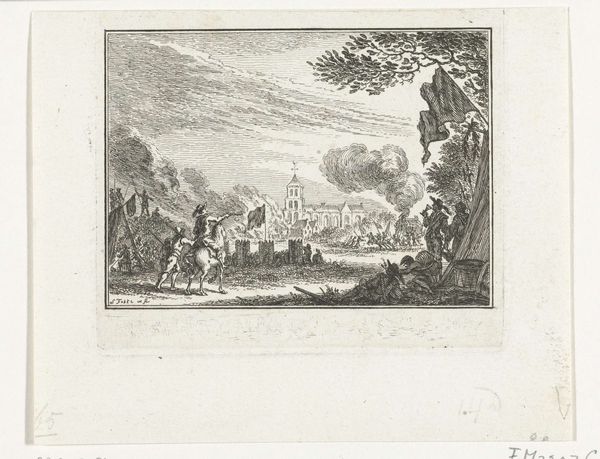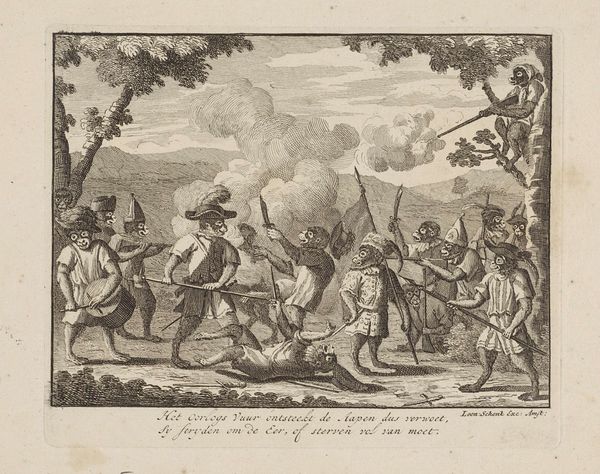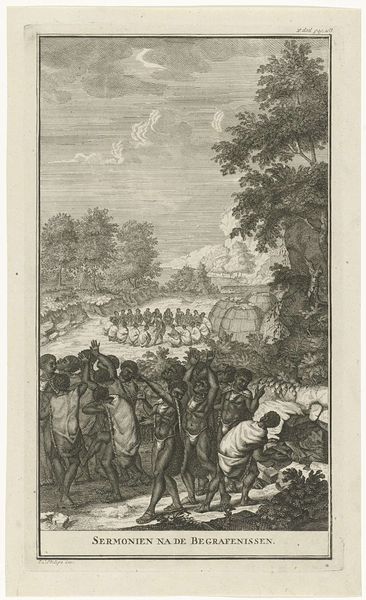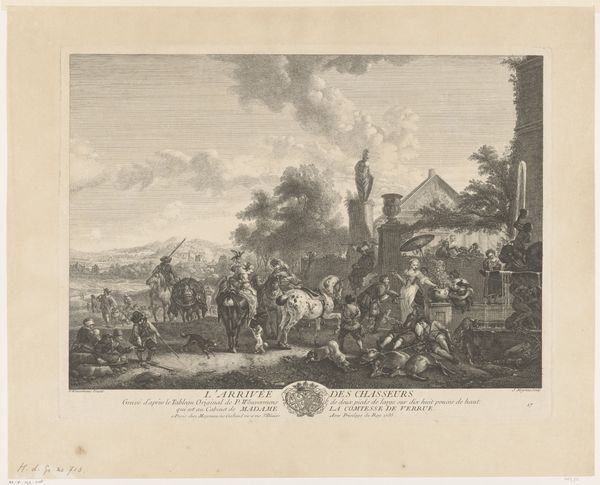
print, engraving
#
neoclacissism
# print
#
old engraving style
#
landscape
#
cityscape
#
history-painting
#
engraving
Dimensions: height 97 mm, width 117 mm
Copyright: Rijks Museum: Open Domain
Curator: This is a print called “Vuurgevecht bij Vreeswijk, 1787” made in 1787 by Cornelis Brouwer, currently held in the collection of the Rijksmuseum. It depicts, as the name suggests, a skirmish at Vreeswijk. Editor: My first impression is that there is an uncanny serenity in this piece. Despite the suggested chaos of battle, the engraving possesses a stillness. Note the composition—a solid, almost classical arrangement, even with smoke and the scattering of figures. Curator: The use of printmaking in this era provided a democratization of history, in a way. Events, even localized conflicts like this one, could be distributed and viewed, shaped through the artist's hand to reflect particular viewpoints or to cement certain memories. I’m curious to explore that narrative building here. Editor: Agreed. From a formalist perspective, I’m interested in the landscape conventions on display: a blend of sharp definition where light touches form, but receding forms blend to give an overall hazy and undefined feel, such as in the background behind the plume of cannon smoke. I am struck by the interplay of light and dark – starkly neoclassicist, you would say. Curator: The scene feels caught between competing symbolic orders: on one side, the old ways of conflict, but with Enlightenment-era ideals reflected in that crisp depiction and orderly retreat. Observe how each figure seems aware of its place within the event. Editor: Yes, and the texture itself – the crispness of the engraving lines – imparts a certain detached elegance, despite the violence it depicts. The texture helps set an aesthetic frame to otherwise chaotic acts. Even though history and narrative might be at the forefront, the structure is not dismissed. It feels very...calculated. Curator: Exactly. And within that calculation, you see the conscious construction of not only a historical record, but a specific interpretation of that moment, a claim about what it meant and what it would mean going forward. Editor: A compelling point. Focusing again on form, it reveals how even seemingly simple landscapes are a blend of conventions and interpretations. Thank you for your interpretation of this piece! Curator: Thank you! This piece clearly reveals history is never passively recorded, but rather actively shaped and remembered.
Comments
No comments
Be the first to comment and join the conversation on the ultimate creative platform.
